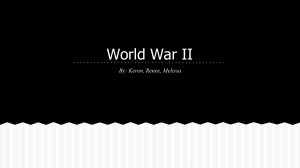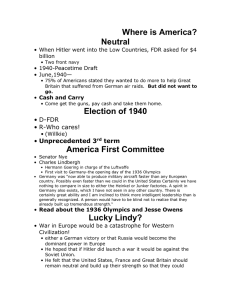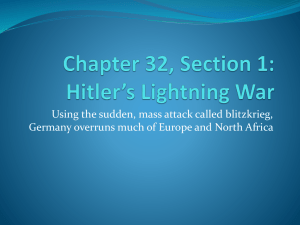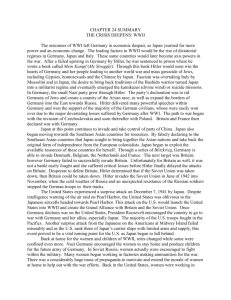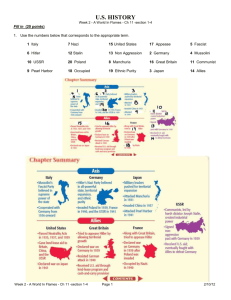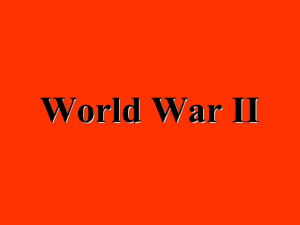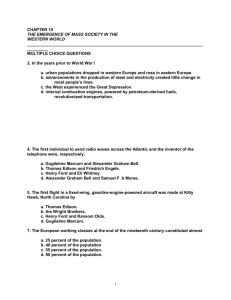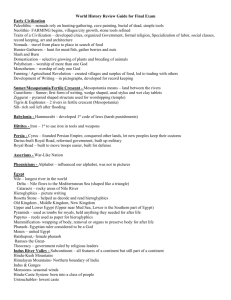PPT-WW II Conferences
advertisement
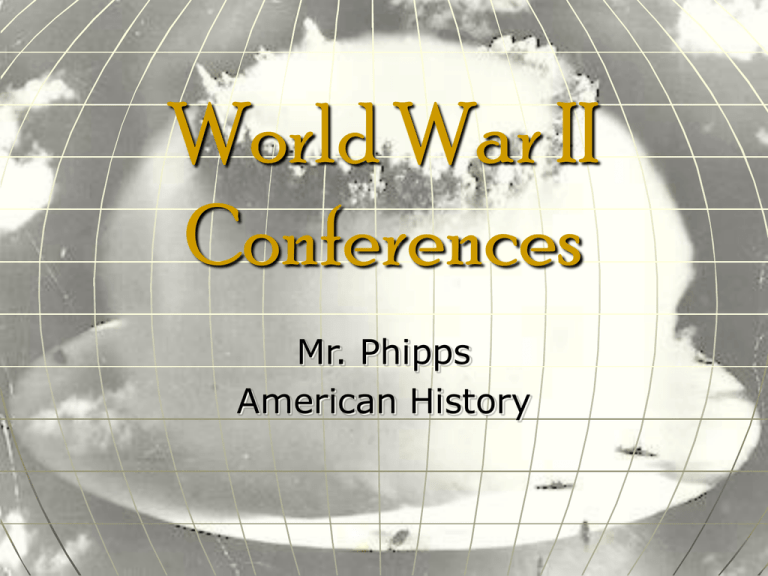
World War II Conferences Mr. Phipps American History London Economic Conference June 12, 1933 66 Nations Goal: to organize a coordinated attack on the global depression Essential to revive world trade Roosevelt withdrew from conference Withdrawal caused the whole conference to collapse Emphasized isolationism and American “protectionism” Munich Conference September 29, 1938 Germany, France, Britain, Italy Hoped to maintain peace by appeasing Germany/Hitler Betrayed Czechoslovakia to Hitler--allowed Hitler to take Czech in exchange for leaving the Sudetenland Hitler promised that the Sudetenland was “the last territorial claim I have to make in Europe” Hitler broke his promise in March of 1939 and took the rest of Czechoslovakia Molotov-Ribbentrop Treaty August 23,1939 Germany, Russia Formalized alliance between U.S.S.R. and Germany Considered the “SovietGerman Nonaggression Pact” Defined secret protocols and spheres of influence in Eastern Europe Agreed to jointly take over Poland Would later be violated by Hitler Havana Conference July 21, 1940 20 Western Hemisphere Countries, U.S. Purpose: To uphold the Monroe Doctrine in the face of global aggression Share information for mutual defense If aggressive action was taken by any nonAmerican nation is made, all American nations would confer to decide on measures to take Atlantic Charter August 14, 1941 Britain, U.S. (later included Russia) Formalized the alliance between Great Britain and America Established war-time strategy--”Europe first” Developed post-war plans • No territorial changes • Self-Determination • Establishment of the United Nations Facilitate free trade Demilitarize Casablanca January 14, 1943 U.S. and Britain Establish military strategy • Step up war in Pacific • Invade Sicily • Increase pressure on Italy Agreed that belligerents would be forced to surrender unconditionally Brought the two exiled French resistance leaders, Henri Giraud and Charles de Gaulle, together Cairo Conference November 1943 U.S., Britain, China Determine postwar settlement of Asia Restore all Chinese land from Japan Secure Korean sovereignty Permit return of Taiwan and Manchuria to China Stalin refused invitation because a meeting with Chiang Kai-Shek may have provoked a war between Japan and Russia Tehran November 28, 1943 U.S., Britain, Russia First time the Big Three met together Discussed military strategy • Open Second Front--D Day invasion • Simultaneous Third Front--Russian counterattack (pincer movement) • Russian commitment to attack Japan after German defeat • Inconclusive regarding postwar Germany Bretton Woods Economic Conference July 1, 1944 44 Nations International monetary fund Fixed exchange rate based on gold International bank for reconstruction and development Yalta February 4, 1945 U.S., Britain, Russia Soviet Concessions • Allow free elections in Poland • Commitment to support war in Asia within 3 months of German surrender Soviet Compensation • Russia allowed to determine Polish boundaries • Receive territory in Manchuria, Sakhalin Islands, Chinese ports Proposed formation of United Nations Established war crimes trials Proposed division of Germany into four cooperative zones Potsdam July 17, 1945 U.S., Russia, Britain First conference to include Truman Decided that Japan must surrender unconditionally or risk total destruction • Truman alludes to the atomic bomb Established cooperative council to administer Germany Promoted safe transfer and return of war refugees Soviet declaration that there will be no free elections • The West considers this an act of betrayal • Beginning of the Cold War NATO April 4, 1949 12 Countries North Atlantic Treaty Organization • Considered the “Sword and Shield” of the United Nations • Intended as the military means by which to safeguard freedom, democracy, the rule of law, and individual human rights-under the control of the American military United pro-Western countries to provide regional stability against the spread of Communism The Treaty of Friendship, Co-operation and Mutual Assistance Warsaw Pact May 12, 1955 8 communist nations Established as a counterbalance for NATO Unified Eastern European countries under Soviet leadership Ensured integration of military, economic, and cultural policies Furthered the Communist ideals
